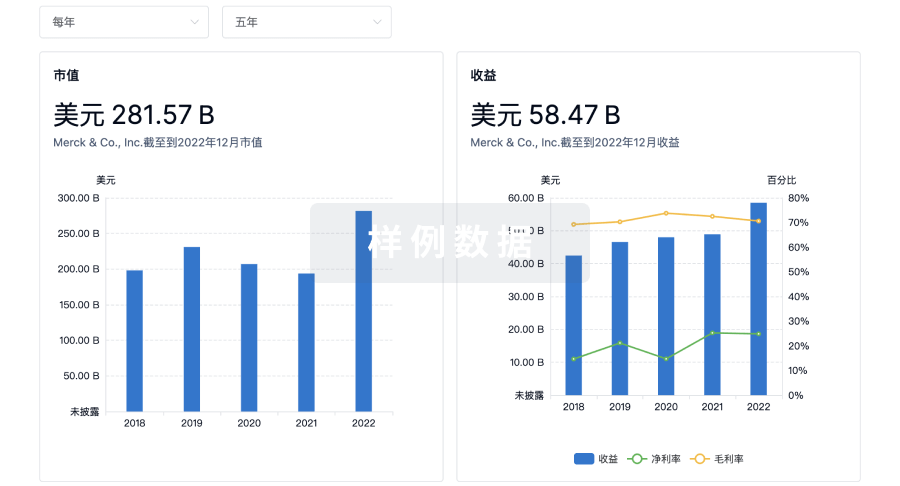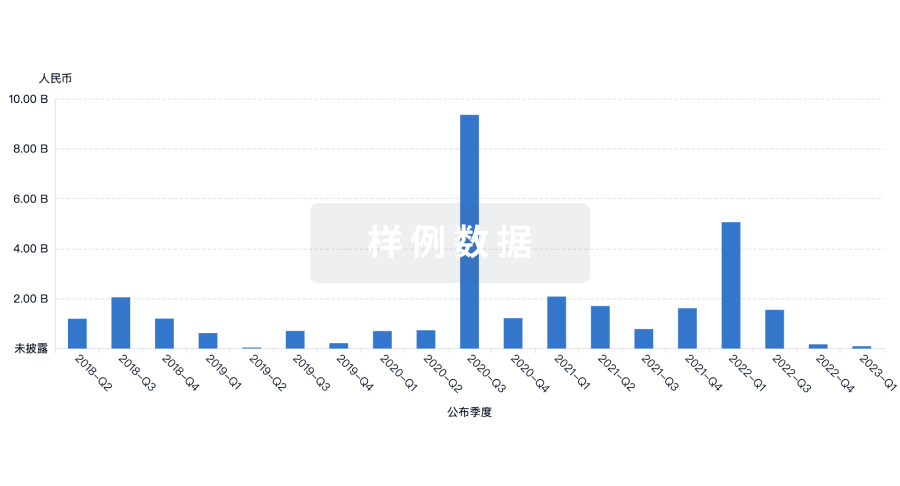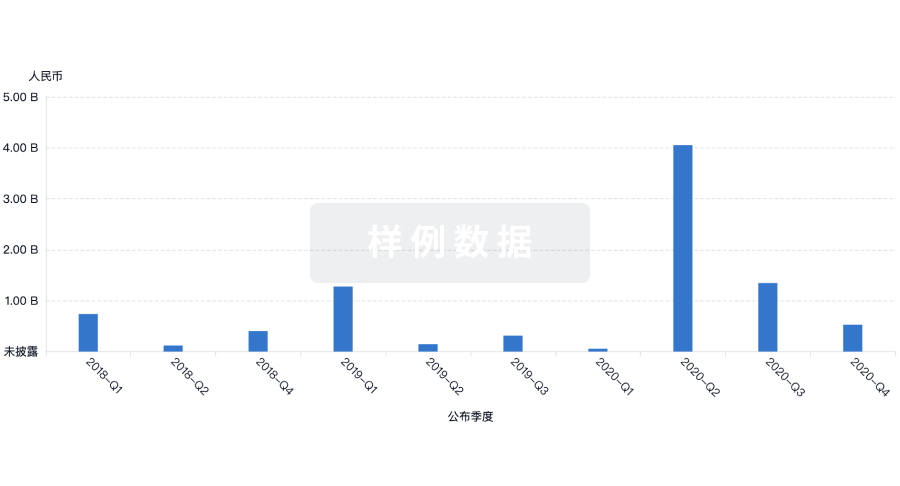预约演示
更新于:2025-08-29
Baxter Oncology GmbH
更新于:2025-08-29
概览
标签
肿瘤
皮肤和肌肉骨骼疾病
ADC
小分子化药
疾病领域得分
一眼洞穿机构专注的疾病领域
暂无数据
技术平台
公司药物应用最多的技术
暂无数据
靶点
公司最常开发的靶点
暂无数据
| 排名前五的药物类型 | 数量 |
|---|---|
| ADC | 2 |
| 小分子化药 | 1 |
| 排名前五的靶点 | 数量 |
|---|---|
| Tubulin x nectin-4 | 1 |
| Top I x Trop-2 | 1 |
| DNA | 1 |
关联
3
项与 Baxter Oncology GmbH 相关的药物作用机制 TOP1抑制剂 [+1] |
在研机构 |
在研适应症 |
非在研适应症 |
最高研发阶段批准上市 |
首次获批国家/地区 日本 |
首次获批日期2024-12-27 |
作用机制 微管蛋白抑制剂 [+1] |
在研机构 |
在研适应症 |
最高研发阶段批准上市 |
首次获批国家/地区 美国 |
首次获批日期2019-12-18 |
靶点 |
作用机制 DNA抑制剂 |
在研机构 |
最高研发阶段批准上市 |
首次获批国家/地区 美国 |
首次获批日期1959-11-16 |
20
项与 Baxter Oncology GmbH 相关的临床试验CTR20250981
一项比较德曲妥珠单抗(优赫得®)联合化疗联合或不联合帕博利珠单抗与化疗联合曲妥珠单抗联合或不联合帕博利珠单抗一线治疗不可切除局部晚期或转移性HER2 阳性胃或胃食管结合部(GEJ)癌受试者的多中心、随机、开放性、III 期 试验(DESTINY-GASTRIC05)
本试验旨在评估德曲妥珠单抗(优赫得,T-DXd,DS-8201a)+氟尿嘧啶+帕博利珠单抗三药联合方案相比SoC 化疗+曲妥珠单抗+帕博利珠单抗一线治疗主队列中不可切除局部晚期或转移性HER2 阳性肿瘤PD-L1 CPS≥1 胃或GEJ 癌受试者的有效性和安全性。一个随机探索性队列进行评估T-DXd+氟尿嘧啶联合治疗相比SoC 化疗+曲妥珠单抗治疗不可切除局部晚期或转移性HER2 阳性肿瘤PD-L1 CPS<1 胃或GEJ 癌受试者的有效性和安全性。
开始日期2025-04-27 |
申办/合作机构 Baxter Oncology GmbH [+2] |
CTR20250279
一项在不适合自体干细胞移植的新诊断多发性骨髓瘤( TI-NDMM ) 受 试 者 中 评 价 belantamab mafodotin 联合来那度胺和地塞米松(BRd)对比达雷妥尤单抗、来那度胺和地塞米松(DRd)的 III期、随机、开放性研究-DREAMM-10
主要目的:在 TI-NDMM 受试者中评价 BRd vs. DRd的临床活性;
关键次要目的:在 TI-NDMM 受试者中进一步评价 BRd vs. DRd 的临床有效性;
次要目的:在 TI-NDMM 受试者中评价 BRd vs. DRd的临床有效性;在 TI-NDMM 受试者中评价 BRd vs. DRd的安全性和耐受性;基于 TI-NDMM 受试者自我报告的症状性不良反应,评价研究治疗的安全性和耐受性;评价并比较 TI-NDMM 受试者的症状及其对功能和 HRQoL 影响的变化;在 TI-NDMM 受试者中表征 belantamab mafodotin 与来那度胺/地塞米松联合给药时 belantamab mafodotin 的暴露量;在 TI-NDMM 受试者中评估 BRd ADA
开始日期2025-03-18 |
申办/合作机构 |
CTR20244119
一项在既往奥希替尼治疗过程中出现疾病进展的EGFR 突变阳性局部晚期或转移性非小细胞肺癌参与者中评估Dato-DXd 联合或不联合奥希替尼治疗对比含铂化疗的III 期、开放性、申办者盲态、随机研究(TROPION-Lung15)
本研究旨在评估 Dato-DXd 联合或不联合奥希替尼对比含铂化疗在既往奥希替尼治疗出现疾病进展的EGFRm 局部晚期或转移性 NSCLC 参与者中的疗效。拟定双主要研究终点旨在证明 Dato-DXd 联合和不联合奥希替尼在盲态独立中心审查(BICR)评估的 PFS 方面相较于化疗的优效性。关键次要有效性终点是OS和CNS PFS。还将评估 Dato-DXd 联合或不联合奥希替尼相较于化疗的安全性和耐受性特征。
开始日期2025-02-05 |
申办/合作机构 AstraZeneca AB [+2] |
100 项与 Baxter Oncology GmbH 相关的临床结果
登录后查看更多信息
0 项与 Baxter Oncology GmbH 相关的专利(医药)
登录后查看更多信息
2
项与 Baxter Oncology GmbH 相关的文献(医药)2019-12-01·Journal of nanobiotechnology
Correction to: Binding mechanism of anti-cancer chemotherapeutic drug mitoxantrone to DNA characterized by magnetic tweezers
作者: Wang, Ying ; Toensing, Katja ; Rattay, Michael ; Anselmetti, Dario ; Kreft, Dennis
Following publication of this article [1] we found a typographical error in the results reported in the abstract. The corrected sentences should read as below.
2018-12-01·Journal of nanobiotechnology2区 · 工程技术
Binding mechanism of anti-cancer chemotherapeutic drug mitoxantrone to DNA characterized by magnetic tweezers
2区 · 工程技术
ArticleOA
作者: Wang, Ying ; Toensing, Katja ; Rattay, Michael ; Anselmetti, Dario ; Kreft, Dennis
BACKGROUND:
Chemotherapeutic agents (anti-cancer drugs) are small cytostatic or cytotoxic molecules that often bind to double-stranded DNA (dsDNA) resulting in modifications of their structural and nanomechanical properties and thus interfering with the cell proliferation process.
METHODS:
We investigated the anthraquinone compound mitoxantrone that is used for treating certain cancer types like leukemia and lymphoma with magnetic tweezers as a single molecule nanosensor. In order to study the association of mitoxantrone with dsDNA, we conducted force-extension and mechanical overwinding experiments with a sensitivity of 10-14 N.
RESULTS:
Using this method, we were able to estimate an equilibrium constant of association Ka ≈ 1 × 105 M-1 as well as a binding site size of n ≈ 2.5 base pairs for mitoxantrone. An unwinding angle of mitoxantrone-intercalation of ϑ ≈ 16° was determined.
CONCLUSION:
Moreover, we observed a complex concentration-dependent bimodal binding behavior, where mitoxantrone associates to dsDNA as an intercalator and groove binder simultaneously at low concentrations and as a mere intercalator at high concentrations.
1
项与 Baxter Oncology GmbH 相关的新闻(医药)2021-08-16
Sesen Bio reached agreement with the FDA a week ago on the product label for its new bladder cancer drug, one of the final steps for bringing a new drug to the market. Wrapping up product labeling is usually a sure sign regulatory approval is forthcoming. But on Monday, Sesen CEO Tom Cannell said the biotech may need to run a new clinical trial.
From Cannell’s telling, until receiving the FDA letter rejecting the drug Vicineum on Friday, there were no indications that the submission was in trouble. During a July 13 meeting, the agency did not flag any deficiencies in the clinical trial data, nor did it ask for a confirmatory clinical trial or require input from an advisory committee comprised of independent experts. The rejection of the drug, which the company had projected could become a blockbuster seller globally, was a “surprising turn of events,” Cannell said during a Monday conference call.
According to Sesen, the FDA’s letter provided recommendations about additional clinical and statistical data analyses. Providing this information may require another clinical trial. The company added that the regulator raised chemistry, manufacturing, and controls issues.
Sesen develops targeted protein fusion therapies. These drugs are made by genetically fusing a targeting antibody with another protein that’s toxic to tumors, yielding a single molecule that is rapidly taken up by the targeted cancer cell. These therapies are intended to be an alternative to antibody drug conjugates (ADC), in which a cytotoxic payload is chemically linked to a targeting antibody. While ADCs have secured regulatory approvals, Sesen has said its fusion proteins could offer efficacy and safety advantages.
Vicineum, Sesen’s lead drug candidate, was developed to treat non-muscle invasive bladder cancer that has not responded to earlier treatment with Bacillus Calmette-Guerin (BCG), an immunotherapy commonly used to treat early-stage bladder cancer. The company tested Vicineum, which is injected directly into the tumor, in an open-label study enrolling 133 patients. The main goal of the Phase 3 clinical trial was to measure the complete response rate to the therapy.
As of the May 2019 cutoff date, 82 patients in the study could be evaluated. At the three-month mark, the complete response rate was 39%; at six months, 26%; at nine months, 20%; and after one year, 17%. Though FDA agreed to the complete response endpoint, Cannell said that the agency’s guidance ahead of the clinical trial left the door open for another study.
“In the February 2018 guidance, the FDA states that a single arm trial clinical trial with a complete response rate and duration of response as the primary endpoint, can provide primary evidence of effectiveness to support a marketing application,” Cannell told financial analysts. “However, in that guidance the FDA also makes it clear that an additional trial may be necessary.”
Cannell said Sesen needs to clarify what the FDA needs to see from this clinical trial, such as whether the main goal should be measuring complete response and duration of response to the therapy. The company needs to know whether 90 to 100 patients is enough, or whether the agency wants a larger sample size. Also unclear is whether the FDA wants a study running longer than 12 months.
Sesen is seeking clarity about the FDA’s manufacturing concerns. Cannell said that Vicineum made for clinical trials came from the company’s Winnipeg facility, which does not have the capacity for commercial-scale production. Sesen has agreements with Fujifilm Diosynth Biotechnologies, Baxter Oncology, and Qilu Pharmaceutical for manufacturing of Vicineum. Cannell said that Sesen must be able to show that the drug made by the company’s commercial partners is almost identical to the drug that was tested in clinical trials.
Sesen was previously known as Eleven Biotherapeutics, a biotech that focused on developing protein drugs to treat eye diseases. The company shifted its focus to cancer with the 2016 acquisition of Canada-based Viventia Bio. That deal happened after Eleven reported its drug isunakinra failed a pair of Phase 3 studies, first in dry eye disease and then later in conjunctivitis. Eleven changed its name to Sesen in 2018.
The FDA’s Vicineum rejection could amount to at least a two-year delay for the drug. If Sesen needs another 12-month trial, enrolling patients and conducting the study means a new biologics license application could be ready in 2023, Cannell said. After resubmission, the FDA timetable for a response is six months.
As of the end of the second quarter of this year, Sesen reported a cash position of $151.1 million. Cannell said that the company believes the capital is sufficient to support the resubmission of the Vicineum application.
Image by Getty Images
合作抗体免疫疗法并购引进/卖出
100 项与 Baxter Oncology GmbH 相关的药物交易
登录后查看更多信息
100 项与 Baxter Oncology GmbH 相关的转化医学
登录后查看更多信息
组织架构
使用我们的机构树数据加速您的研究。
登录
或

管线布局
2025年12月19日管线快照
管线布局中药物为当前组织机构及其子机构作为药物机构进行统计,早期临床1期并入临床1期,临床1/2期并入临床2期,临床2/3期并入临床3期
申请上市
3
3
其他
登录后查看更多信息
当前项目
| 药物(靶点) | 适应症 | 全球最高研发状态 |
|---|---|---|
维恩妥尤单抗 ( Tubulin x nectin-4 ) | 局部晚期尿路上皮癌 更多 | 申请上市 |
德达博妥单抗 ( Top I x Trop-2 ) | HR阳性/HER2阴性乳腺癌 更多 | 申请上市 |
马磷酰胺 ( DNA ) | 脑膜癌病 更多 | 终止 |
D-64131 ( Tubulin ) | 肿瘤 更多 | 无进展 |
D-70166 ( HER2 exon 20 ) | 乳腺癌 更多 | 无进展 |
登录后查看更多信息
药物交易
使用我们的药物交易数据加速您的研究。
登录
或

转化医学
使用我们的转化医学数据加速您的研究。
登录
或

营收
使用 Synapse 探索超过 36 万个组织的财务状况。
登录
或

科研基金(NIH)
访问超过 200 万项资助和基金信息,以提升您的研究之旅。
登录
或

投资
深入了解从初创企业到成熟企业的最新公司投资动态。
登录
或

融资
发掘融资趋势以验证和推进您的投资机会。
登录
或

生物医药百科问答
全新生物医药AI Agent 覆盖科研全链路,让突破性发现快人一步
立即开始免费试用!
智慧芽新药情报库是智慧芽专为生命科学人士构建的基于AI的创新药情报平台,助您全方位提升您的研发与决策效率。
立即开始数据试用!
智慧芽新药库数据也通过智慧芽数据服务平台,以API或者数据包形式对外开放,助您更加充分利用智慧芽新药情报信息。
生物序列数据库
生物药研发创新
免费使用
化学结构数据库
小分子化药研发创新
免费使用




